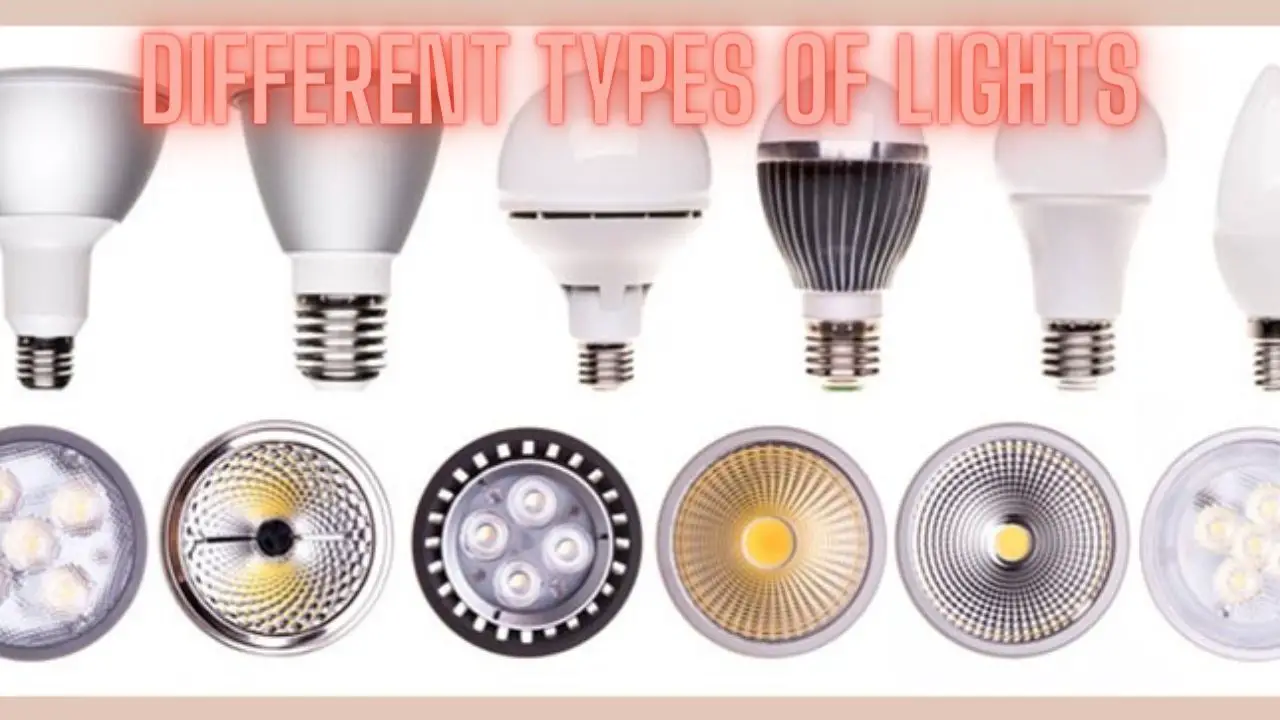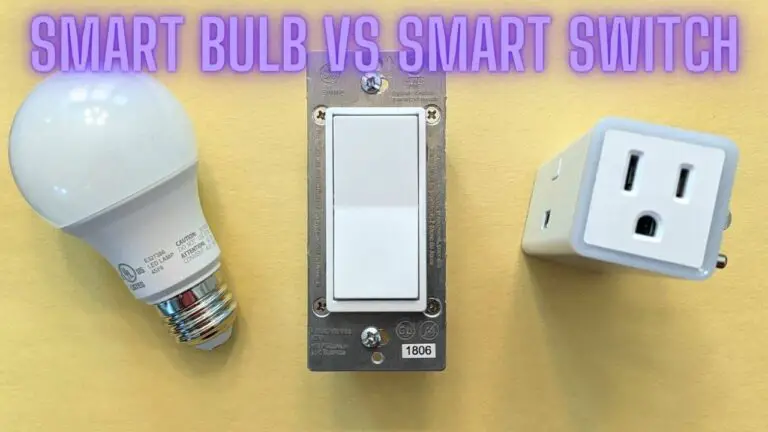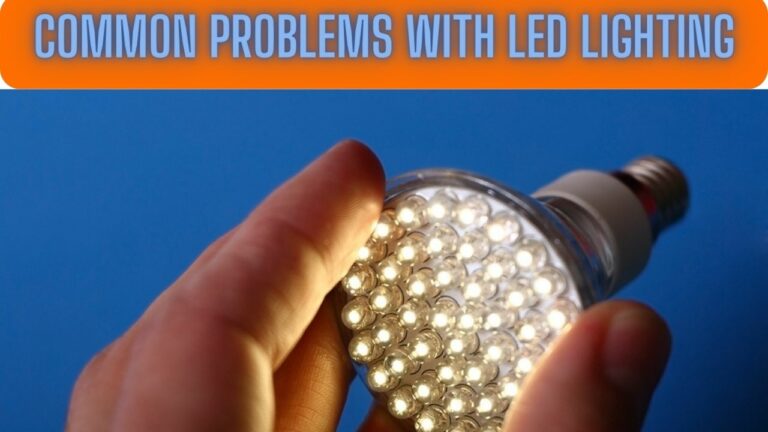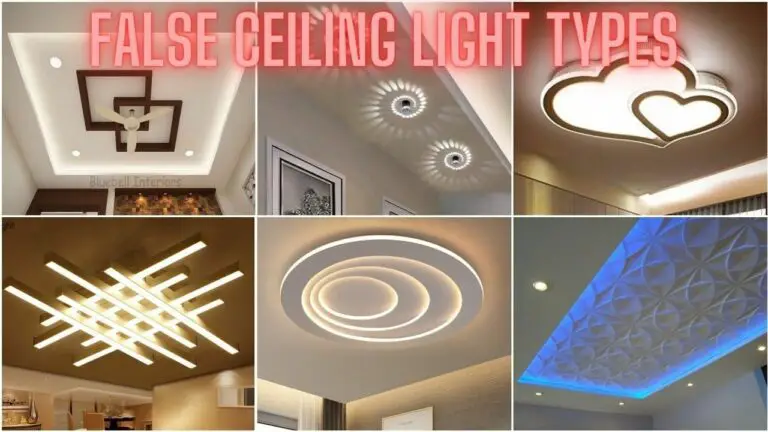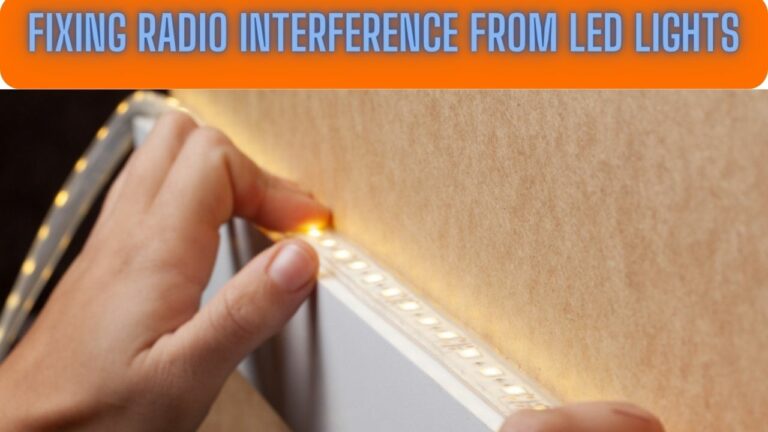Exploring the Different Types of Lights: Illuminating Your World
Introduction
Lighting plays a fundamental role in our lives, shaping our environments, influencing our moods, and facilitating various activities. Understanding the different types of lights available is essential for making informed decisions in areas ranging from home illumination to industrial applications. This document aims to provide an overview of the diverse range of light sources, both natural and artificial, that contribute to our daily lives.
In this introduction, we will discuss the purpose of exploring different types of lights and the importance of gaining knowledge about them. By delving into the characteristics, applications, and advantages or disadvantages of each type of lighting, readers can develop a deeper appreciation for the complexity and versatility of light sources. Whether it’s harnessing the energy of the sun or selecting the most suitable artificial lighting for a specific setting, understanding the nuances of various light sources empowers individuals and businesses to make informed choices that enhance efficiency, comfort, and well-being.
Throughout this document, we will explore natural light sources such as sunlight, moonlight, and firelight, as well as artificial lighting options including incandescent, fluorescent, LED, halogen, HID, neon, and fiber optic lighting. By examining each type in detail, readers will gain insights into their unique characteristics, applications across different industries, and the pros and cons associated with their use.
Ultimately, this exploration of different types of lights aims to broaden understanding, spark curiosity, and encourage the thoughtful integration of lighting solutions into our daily lives and built environments. Whether it’s creating inviting spaces, improving visibility and safety, or enhancing aesthetic appeal, the right choice of lighting can truly transform our surroundings and experiences.
Natural Light Sources
Natural light sources are those that originate from the sun and other celestial bodies, as well as from combustion processes such as fire. These sources provide illumination without the need for artificial intervention and have been essential to life on Earth since the planet’s inception. Understanding natural light sources is crucial for numerous reasons, including their impact on human health, their role in ecosystems, and their influence on architectural design and urban planning.
In this section, we will explore some of the primary natural light sources:
- Sunlight:
- Sunlight is the primary natural light source on Earth, providing illumination and warmth essential for life.
- It consists of a broad spectrum of wavelengths, including visible light, ultraviolet (UV) radiation, and infrared (IR) radiation.
- Sunlight varies in intensity and color temperature depending on factors such as time of day, geographical location, and atmospheric conditions.
- The angle of sunlight affects its quality and quantity, influencing factors such as shadows, glare, and solar heat gain.
- Sunlight plays a crucial role in regulating circadian rhythms, vitamin D synthesis, and overall well-being in humans and other organisms.
- Moonlight:
- Moonlight is the reflected sunlight that reaches Earth’s surface after being scattered and refracted by the moon’s surface.
- It has a cooler color temperature and lower intensity compared to direct sunlight, creating a softer and more diffused illumination.
- Moonlight has cultural and symbolic significance in various societies, influencing traditions, folklore, and religious practices.
- Its presence or absence affects nocturnal animals’ behavior, plant growth cycles, and human activities such as outdoor recreation and navigation.
- Firelight:
- Firelight is produced through the combustion of organic matter, emitting visible light and heat.
- Historically, firelight served as humanity’s primary source of illumination, providing warmth, protection, and a means of cooking.
- Firelight has a warm color temperature and dynamic flickering effect, creating a cozy and intimate ambiance in indoor and outdoor settings.
- Despite advances in artificial lighting technology, firelight continues to hold cultural and aesthetic significance, often used in ceremonial, recreational, and decorative contexts.
Understanding the characteristics and dynamics of natural light sources is essential for various disciplines, including architecture, photography, agriculture, and medicine. By harnessing the benefits of natural light and integrating them into design strategies and daily routines, individuals and communities can promote sustainability, well-being, and connectivity with the natural world.
Incandescent Lighting
Incandescent lighting is a type of artificial lighting that produces illumination by heating a filament wire to a high temperature until it emits visible light. It has been one of the most common forms of lighting for residential, commercial, and industrial applications for over a century. While its popularity has diminished in recent years due to the development of more energy-efficient alternatives, such as LED and fluorescent lighting, incandescent lighting still offers unique characteristics and remains in use in certain contexts.
Here are key aspects of incandescent lighting:
- Definition and Principle:
- Incandescent lighting operates on the principle of incandescence, where an electric current passes through a thin filament wire made of tungsten or other suitable materials, heating it to a high temperature.
- As the filament heats up, it emits visible light along with infrared radiation, producing illumination.
- Characteristics:
- Warmth: Incandescent lighting produces a warm, inviting glow that closely resembles natural sunlight. It is often preferred for its color rendering properties, which enhance the appearance of skin tones and textiles.
- Dimming Capability: Incandescent bulbs can be easily dimmed to adjust the level of illumination, providing flexibility in creating different atmospheres and moods.
- Instant On: Unlike some other types of lighting, incandescent bulbs reach full brightness immediately upon being switched on, without any warm-up time.
- Omni-Directional: Traditional incandescent bulbs emit light in all directions, making them suitable for use in fixtures where uniform illumination is desired.
- Applications:
- Residential Lighting: Incandescent bulbs have been commonly used for general lighting, accent lighting, and decorative purposes in homes.
- Commercial and Hospitality Settings: Incandescent lighting has been popular in restaurants, hotels, and retail stores for its warm and inviting ambiance.
- Stage and Studio Lighting: Incandescent bulbs are still used in theatrical and photographic lighting due to their color rendering properties and dimming capabilities.
- Advantages and Disadvantages:
- Advantages:
- Warm and pleasing light quality
- Affordable initial cost
- Compatibility with dimmer switches
- Disadvantages:
- Low energy efficiency: Incandescent bulbs waste a significant amount of energy as heat, making them less efficient compared to LED and fluorescent lighting.
- Short lifespan: Incandescent bulbs have a relatively short lifespan compared to alternative lighting technologies.
- Environmental impact: Incandescent bulbs consume more energy and have a higher carbon footprint than energy-efficient alternatives, contributing to environmental concerns such as greenhouse gas emissions.
- Advantages:
Despite its drawbacks, incandescent lighting continues to be used in specific applications where its unique qualities are valued, although its overall market share has declined with the rise of more energy-efficient lighting options. Efforts to improve the efficiency of incandescent bulbs, such as halogen incandescent technology, have been made to address some of its limitations while retaining its desirable characteristics.
Fluorescent Lighting
Fluorescent lighting is a type of artificial lighting that produces illumination by exciting mercury vapor with electricity, which in turn emits ultraviolet (UV) light. The UV light then interacts with phosphor coating on the inside of the bulb, causing it to fluoresce and emit visible light. Fluorescent lighting has been widely used for various indoor applications due to its energy efficiency and long lifespan.
Here’s an overview of fluorescent lighting:
- Definition and Principle:
- Fluorescent lighting operates on the principle of fluorescence, where electricity passes through mercury vapor inside a tube, producing UV radiation.
- The UV radiation interacts with a phosphor coating on the inside surface of the tube, causing it to fluoresce and emit visible light.
- Characteristics:
- Energy Efficiency: Fluorescent lighting is more energy-efficient than incandescent lighting, producing more lumens per watt of energy consumed.
- Cool Operation: Fluorescent bulbs generate less heat compared to incandescent bulbs, making them suitable for applications where heat buildup is a concern.
- Long Lifespan: Fluorescent bulbs have a longer lifespan than incandescent bulbs, reducing the frequency of replacement and maintenance.
- Color Temperature Options: Fluorescent bulbs are available in a range of color temperatures, from warm white to cool white, allowing for flexibility in lighting design.
- Applications:
- Commercial and Industrial Lighting: Fluorescent lighting is commonly used in offices, schools, factories, and retail spaces for general illumination.
- Residential Lighting: While less common in residential settings compared to incandescent and LED lighting, fluorescent fixtures are still used in some homes, particularly in areas such as kitchens, garages, and basements.
- Specialty Applications: Fluorescent tubes are also used in specialized applications such as aquarium lighting, where the spectrum of light emitted is important for plant and animal health.
- Advantages and Disadvantages:
- Advantages:
- Energy Efficiency: Fluorescent lighting consumes less energy and produces more light output compared to incandescent lighting.
- Long Lifespan: Fluorescent bulbs have a longer lifespan, resulting in reduced maintenance and replacement costs.
- Versatility: Fluorescent bulbs are available in various sizes and configurations, making them suitable for different lighting applications.
- Disadvantages:
- Flickering and Humming: Some fluorescent bulbs may flicker or produce audible humming noises, particularly at the end of their lifespan or when used with incompatible ballasts.
- Color Rendering: While improvements have been made, fluorescent lighting historically had poorer color rendering compared to incandescent lighting, resulting in less accurate representation of colors.
- Environmental Concerns: Fluorescent bulbs contain small amounts of mercury, posing environmental risks if not disposed of properly. Efforts have been made to develop more environmentally friendly alternatives, such as LED lighting.
- Advantages:
Overall, fluorescent lighting offers significant energy savings and longevity compared to traditional incandescent lighting, making it a popular choice for commercial and industrial applications. However, advancements in LED lighting technology have led to increased competition and reduced market share for fluorescent lighting in recent years.
LED Lighting
LED (Light-Emitting Diode) lighting is a type of artificial lighting that produces illumination by passing an electric current through a semiconductor material, causing it to emit light. LED lighting has gained widespread popularity and adoption in recent years due to its energy efficiency, long lifespan, and versatility in various applications.
Here’s an overview of LED lighting:
- Definition and Principle:
- LED lighting operates on the principle of electroluminescence, where the movement of electrons within a semiconductor material produces photons of light.
- When a voltage is applied across the LED, electrons are forced to recombine with electron holes within the semiconductor, emitting light in the process.
- Characteristics:
- Energy Efficiency: LED lighting is highly energy-efficient, converting a higher percentage of electrical energy into visible light compared to traditional incandescent and fluorescent lighting.
- Long Lifespan: LED bulbs have an exceptionally long lifespan, typically lasting tens of thousands of hours before needing replacement. This longevity reduces maintenance and replacement costs.
- Instant On: LED bulbs reach full brightness instantly upon being switched on, without any warm-up time.
- Durability: LED bulbs are more durable and resistant to shock, vibration, and temperature fluctuations compared to incandescent and fluorescent bulbs.
- Directional Light: LEDs emit light in a specific direction, allowing for more precise illumination and reduced light spillage compared to traditional bulbs.
- Applications:
- Residential Lighting: LED lighting is commonly used for general lighting, accent lighting, task lighting, and decorative purposes in homes. LED bulbs are available in various shapes, sizes, and color temperatures to suit different lighting needs.
- Commercial and Architectural Lighting: LED lighting is widely used in offices, retail stores, hotels, restaurants, and other commercial spaces for energy-efficient illumination. LED fixtures offer flexibility in design and control options, allowing for customized lighting solutions.
- Outdoor Lighting: LED lighting is well-suited for outdoor applications such as street lighting, parking lots, landscape lighting, and security lighting. Its durability, long lifespan, and energy efficiency make it ideal for harsh outdoor environments.
- Automotive Lighting: LED technology is increasingly used in automotive lighting systems for headlights, taillights, brake lights, and interior lighting. LEDs offer improved visibility, energy savings, and design flexibility compared to traditional incandescent bulbs.
- Advantages and Disadvantages:
- Advantages:
- Energy Efficiency: LED lighting consumes significantly less energy than incandescent and fluorescent lighting, resulting in lower electricity bills and reduced environmental impact.
- Long Lifespan: LED bulbs have a much longer lifespan, reducing the frequency of replacement and maintenance.
- Eco-Friendly: LED bulbs are mercury-free and produce less greenhouse gas emissions compared to traditional lighting technologies, making them environmentally friendly.
- Design Flexibility: LED lighting allows for innovative design possibilities, including color-changing options, dimming capabilities, and integration with smart lighting systems.
- Disadvantages:
- Higher Initial Cost: LED bulbs may have a higher upfront cost compared to traditional bulbs, although the long-term energy savings and lifespan often justify the investment.
- Heat Sensitivity: LEDs are sensitive to heat, which can affect their performance and lifespan if not properly managed. Adequate heat dissipation measures are necessary to maintain optimal operation.
- Color Consistency: Some LED bulbs may exhibit variations in color temperature and color rendering, leading to inconsistencies in lighting quality. However, advancements in LED technology have addressed many of these issues.
- Advantages:
Overall, LED lighting offers numerous advantages over traditional lighting technologies, making it the preferred choice for a wide range of applications. As LED technology continues to evolve and become more affordable, its market share is expected to further increase, driving continued innovation and improvements in energy efficiency, performance, and design.
Halogen Lighting
Halogen lighting is a type of incandescent lighting that uses a tungsten filament enclosed in a small transparent capsule filled with halogen gas, typically iodine or bromine. Halogen lighting offers several advantages over traditional incandescent bulbs, including higher energy efficiency and longer lifespan, making it a popular choice for various indoor and outdoor lighting applications.
Here’s an overview of halogen lighting:
- Definition and Principle:
- Halogen lighting operates on the same principle as traditional incandescent lighting, where electricity passes through a tungsten filament, heating it to produce light.
- However, halogen bulbs contain a small amount of halogen gas, which reacts with evaporated tungsten atoms, redepositing them back onto the filament, thereby extending its lifespan.
- The halogen cycle improves the efficiency and longevity of the bulb compared to standard incandescent bulbs.
- Characteristics:
- Brightness: Halogen bulbs produce bright, white light with high color rendering properties, making them suitable for applications where accurate color representation is essential.
- Efficiency: Halogen lighting is more energy-efficient than traditional incandescent lighting, producing more lumens per watt of energy consumed.
- Longevity: Halogen bulbs have a longer lifespan than standard incandescent bulbs, typically lasting two to three times longer.
- Instant On: Halogen bulbs reach full brightness immediately upon being switched on, without any warm-up time.
- Applications:
- Indoor Lighting: Halogen lighting is commonly used for general lighting, task lighting, accent lighting, and decorative purposes in residential and commercial settings. Halogen bulbs are available in various shapes and sizes, making them suitable for a wide range of fixtures.
- Outdoor Lighting: Halogen lighting is also used for outdoor applications such as landscape lighting, security lighting, and architectural lighting. Halogen floodlights and spotlights provide bright illumination for outdoor spaces.
- Automotive Lighting: Halogen bulbs are widely used in automotive headlights, fog lights, and auxiliary lighting due to their brightness and durability.
- Advantages and Disadvantages:
- Advantages:
- Bright, White Light: Halogen bulbs produce bright, white light with excellent color rendering properties, enhancing visibility and aesthetics.
- Energy Efficiency: Halogen lighting is more energy-efficient than standard incandescent lighting, resulting in lower energy costs and reduced environmental impact.
- Long Lifespan: Halogen bulbs have a longer lifespan compared to traditional incandescent bulbs, reducing maintenance and replacement costs.
- Versatility: Halogen bulbs are available in various wattages, voltages, and shapes, making them suitable for a wide range of lighting applications.
- Disadvantages:
- Heat Output: Halogen bulbs generate more heat than some other lighting technologies, which can be a concern in enclosed fixtures or in warm climates.
- Fragility: Halogen bulbs are more fragile than LED bulbs and may be more prone to damage from vibration or impact.
- Higher Operating Temperature: Halogen bulbs operate at higher temperatures than some other lighting technologies, requiring proper ventilation and handling to prevent overheating.
- Advantages:
Overall, halogen lighting offers a balance of brightness, energy efficiency, and longevity, making it a popular choice for various indoor and outdoor lighting applications. While LED technology has become increasingly dominant in recent years, halogen lighting remains a viable option for situations where its unique characteristics are valued.
HID (High-Intensity Discharge) Lighting
HID lighting is a type of artificial lighting that produces illumination through the discharge of an electric arc between electrodes housed inside a transparent or translucent arc tube. HID lighting systems typically consist of a ballast to regulate the electrical current and control the operation of the lamp. HID lighting is known for its high efficiency, intense brightness, and long lifespan, making it suitable for various indoor and outdoor applications.
Here’s an overview of HID lighting:
- Types of HID Lamps:
- Metal Halide Lamps: Metal halide lamps contain a mixture of metal halide salts, mercury, and other gases within the arc tube. When the lamp is ignited, the electric arc vaporizes the metal halides, producing intense visible light. Metal halide lamps are known for their bright, white light and are commonly used for outdoor lighting, stadium lighting, and indoor applications such as gymnasiums and large retail spaces.
- High-Pressure Sodium (HPS) Lamps: High-pressure sodium lamps contain sodium and mercury vapor within the arc tube. When the lamp is ignited, the electric arc vaporizes the sodium and mercury, producing a characteristic golden-yellow light. HPS lamps are known for their high efficiency and long lifespan and are commonly used for street lighting, parking lot lighting, and greenhouse lighting.
- Characteristics:
- High Efficiency: HID lamps are highly efficient at converting electrical energy into visible light, resulting in high lumen output per watt of electricity consumed.
- Intense Brightness: HID lamps produce intense, bright light, making them suitable for applications where high levels of illumination are required.
- Long Lifespan: HID lamps have a longer lifespan compared to some other types of lighting, reducing maintenance and replacement costs.
- Color Rendering: Metal halide lamps typically have better color rendering properties compared to high-pressure sodium lamps, producing more natural-looking light that is suitable for applications where color accuracy is important.
- Applications:
- Outdoor Lighting: HID lighting is commonly used for outdoor applications such as street lighting, highway lighting, parking lot lighting, and security lighting. HID lamps provide bright, uniform illumination over large areas, improving visibility and safety at night.
- Sports Lighting: HID lighting is widely used for sports lighting applications such as stadium lighting, arena lighting, and field lighting. HID lamps produce high levels of brightness and can effectively illuminate large outdoor or indoor sports facilities.
- Industrial and Commercial Lighting: HID lighting is used in industrial and commercial settings such as warehouses, factories, and large retail spaces. HID lamps provide bright, energy-efficient illumination for high-ceiling environments and can be used in combination with lighting controls for enhanced energy savings.
- Greenhouse Lighting: HID lighting, particularly high-pressure sodium lamps, is commonly used for greenhouse lighting to promote plant growth and optimize crop yields. HID lamps emit light in the red and orange spectrum, which is beneficial for photosynthesis.
- Advantages and Disadvantages:
- Advantages:
- High Efficiency: HID lamps are highly efficient at converting electrical energy into visible light, resulting in high lumen output per watt of electricity consumed.
- Intense Brightness: HID lamps produce intense, bright light, making them suitable for applications where high levels of illumination are required.
- Long Lifespan: HID lamps have a longer lifespan compared to some other types of lighting, reducing maintenance and replacement costs.
- Versatility: HID lighting systems are available in various wattages, color temperatures, and configurations to suit different applications and lighting requirements.
- Disadvantages:
- Warm-Up Time: Some HID lamps require a warm-up period before reaching full brightness, which may not be suitable for applications where instant illumination is required.
- Color Rendering: High-pressure sodium lamps have poor color rendering properties, producing a yellowish light that may distort colors and make it difficult to distinguish between objects.
- Maintenance: HID lighting systems may require periodic maintenance, such as cleaning, relamping, and ballast replacement, to ensure optimal performance and longevity.
- Advantages:
Overall, HID lighting offers high efficiency, intense brightness, and long lifespan, making it a popular choice for various outdoor and indoor lighting applications. While LED lighting has become increasingly competitive in recent years, HID lighting remains a viable option for situations where high levels of illumination and reliability are essential.
Neon Lighting
Neon lighting is a type of lighting technology that utilizes neon gas and electricity to produce a distinctive, colorful glow. While it’s often associated with vibrant signs and decorative lighting, neon lighting has various applications beyond signage, including artistic installations, architectural accents, and entertainment venues.
Here’s an overview of neon lighting:
- Definition and Principle:
- Neon lighting operates on the principle of gas discharge, where electricity is passed through a sealed glass tube containing neon gas or other noble gases, such as argon or helium.
- When the electricity ionizes the gas atoms inside the tube, they emit photons of light, creating the characteristic glow associated with neon lighting.
- Different gases and phosphor coatings can be used to produce a variety of colors, ranging from the classic red-orange of neon to hues like blue, green, and yellow.
- Characteristics:
- Vibrant Colors: Neon lighting is known for its vibrant, eye-catching colors, making it a popular choice for signage and decorative purposes.
- Longevity: Neon lights have a relatively long lifespan compared to some other lighting technologies, often lasting for tens of thousands of hours with proper maintenance.
- Versatility: Neon lighting can be shaped into intricate designs and letters, allowing for creative customization in signage and artistic installations.
- Low Energy Consumption: While not as energy-efficient as LED lighting, neon lighting consumes less energy than some other types of lighting, making it a relatively economical option for certain applications.
- Applications:
- Signage and Branding: Neon lighting is widely used in signage for businesses, restaurants, bars, and other establishments seeking to attract attention and convey a distinct brand identity.
- Artistic Installations: Neon lighting has long been favored by artists and designers for its expressive potential and ability to create striking visual effects. Neon sculptures, installations, and artworks are often featured in galleries, public spaces, and special events.
- Architectural Accents: Neon lighting is employed in architectural lighting to highlight building facades, accentuate architectural features, and create dramatic lighting effects in both interior and exterior spaces.
- Entertainment and Hospitality: Neon lighting adds ambiance and personality to entertainment venues, theaters, casinos, and hospitality establishments, contributing to the overall atmosphere and guest experience.
- Advantages and Disadvantages:
- Advantages:
- Eye-Catching Aesthetics: Neon lighting provides a unique and visually appealing aesthetic that stands out, making it an effective tool for signage and branding.
- Customization Options: Neon lights can be custom-designed and fabricated into a wide range of shapes, letters, and symbols, allowing for personalized and creative installations.
- Long Lifespan: Neon lights have a relatively long lifespan compared to some other lighting technologies, resulting in lower maintenance costs over time.
- Disadvantages:
- Fragility: Neon tubes are delicate and can be prone to breakage if mishandled or subjected to impact, requiring careful installation and maintenance.
- Limited Color Options: While neon lighting offers a variety of colors, the range is somewhat limited compared to other lighting technologies like LED, which can produce a wider spectrum of hues.
- Heat Generation: Neon lights can generate heat during operation, particularly in enclosed spaces or in hot climates, requiring adequate ventilation and cooling measures.
- Advantages:
Despite the rise of LED lighting technology, neon lighting continues to be valued for its unique aesthetic qualities, nostalgic appeal, and artistic versatility. Whether used for commercial signage, architectural accents, or creative installations, neon lighting remains a distinctive and iconic form of illumination.
Fiber Optic Lighting
Fiber optic lighting is a type of lighting technology that utilizes optical fibers to transmit light from a remote source to desired locations for illumination. Unlike traditional lighting systems where light is emitted from a central source such as a bulb or LED, fiber optic lighting allows for flexible placement of light fixtures and precise control over lighting effects.
Here’s an overview of fiber optic lighting:
- Definition and Principle:
- Fiber optic lighting works on the principle of total internal reflection, where light is transmitted through optical fibers by repeatedly reflecting off the inner walls of the fiber core.
- The light source, often a powerful halogen or LED light engine, is located remotely from the desired lighting area and connected to the optical fibers via a light source or illuminator unit.
- Light is transmitted through the optical fibers to the desired locations, where it is emitted through specialized fixtures or diffusers, providing illumination with minimal heat and electrical hazards.
- Characteristics:
- Flexibility: Fiber optic lighting systems offer unparalleled flexibility in lighting design, allowing for precise placement of light fixtures in hard-to-reach or sensitive areas.
- Color Options: Fiber optic lighting can produce a wide range of colors by using colored filters or by employing color-changing LED light engines.
- Safety: Since the light source is located remotely from the illuminated area, fiber optic lighting systems eliminate the risk of electrical shock and minimize heat generation, making them safe for use in various environments.
- Energy Efficiency: Fiber optic lighting systems are highly energy-efficient, with the light source consuming less power compared to traditional lighting fixtures.
- Applications:
- Architectural Lighting: Fiber optic lighting is commonly used in architectural applications to highlight building facades, accentuate interior spaces, and create dramatic lighting effects in both residential and commercial settings.
- Decorative Lighting: Fiber optic lighting is popular for decorative purposes in themed entertainment venues, hotels, restaurants, and residential spaces, allowing for creative and customizable lighting solutions.
- Display Lighting: Fiber optic lighting is used to illuminate museum exhibits, retail displays, art installations, and product showcases, providing uniform and glare-free illumination with precise control over lighting direction and intensity.
- Pool and Spa Lighting: Fiber optic lighting is ideal for underwater lighting applications in pools, spas, and water features, where traditional lighting fixtures pose safety hazards and maintenance challenges.
- Advantages and Disadvantages:
- Advantages:
- Flexible Design: Fiber optic lighting systems offer flexibility in lighting design, allowing for precise control over light placement and distribution.
- Safety: Fiber optic lighting eliminates the risk of electrical shock and minimizes heat generation, making it safe for use in various environments, including wet or hazardous locations.
- Energy Efficiency: Fiber optic lighting systems consume less power compared to traditional lighting fixtures, resulting in lower energy costs and reduced environmental impact.
- Disadvantages:
- Initial Cost: Fiber optic lighting systems may have a higher initial cost compared to traditional lighting fixtures, primarily due to the cost of optical fibers and light source equipment.
- Complexity: Designing and installing fiber optic lighting systems may require specialized knowledge and expertise, particularly for large-scale or custom installations.
- Maintenance: While fiber optic lighting systems require minimal maintenance compared to traditional lighting fixtures, periodic cleaning and inspection of optical fibers and light source equipment are necessary to ensure optimal performance.
- Advantages:
Despite its higher upfront cost and technical complexity, fiber optic lighting offers unique advantages in terms of flexibility, safety, and energy efficiency, making it a preferred choice for various architectural, decorative, and display lighting applications where precise control and customizable lighting effects are desired.
FAQS
What are the main differences between incandescent and LED lights?
- Incandescent lights produce light by heating a filament, while LED lights use semiconductor technology. LEDs are more energy-efficient, have a longer lifespan, and produce less heat compared to incandescent lights.
Are fluorescent and CFL lights the same thing?
- No, they are not the same. Fluorescent lights refer to the general category of lights that use mercury vapor and phosphorescent coatings to produce light. CFLs (Compact Fluorescent Lamps) are a specific type of fluorescent light that is compact in size and designed to replace incandescent bulbs in residential lighting.
What makes halogen lights different from standard incandescent bulbs?
- Halogen lights are a type of incandescent bulb that contains halogen gas. This gas allows them to operate at higher temperatures, making them more efficient and longer-lasting than traditional incandescent bulbs.
Why are LED lights considered the future of lighting?
- LED lights are highly energy-efficient, have a long lifespan, produce minimal heat, and offer versatile lighting options. They consume significantly less energy than traditional bulbs and have a lower environmental impact.
What are the advantages of using HID lights in outdoor lighting, such as streetlights?
- HID (High-Intensity Discharge) lights are preferred for outdoor lighting because they produce a high level of brightness and are energy-efficient. They provide excellent visibility in large outdoor spaces while consuming less energy compared to traditional lighting technologies.
How do neon lights work, and why are they often used for signage?
- Neon lights work by passing an electric current through neon gas, causing it to emit colored light. They are often used for signage because they are highly visible and can be shaped into various letters, symbols, and designs, making them attractive for advertising and decoration.
What are some common uses of laser lights beyond laser light shows?
- Laser lights have numerous practical applications, including in scientific research (e.g., in laboratories and experiments), medical procedures (e.g., for surgery and eye treatment), telecommunications (e.g., in fiber optic communication), and precision measurement (e.g., in surveying and alignment tasks).
How do fiber optic lights transmit light over long distances, and where are they commonly used?
- Fiber optic lights transmit light through thin strands of glass or plastic fibers using internal reflection. They are commonly used in telecommunications for data transmission, in medical devices for imaging and diagnostics, and in decorative lighting for creating unique and colorful effects.
What are the advantages of using xenon headlights in vehicles?
- Xenon headlights are known for their brightness and white light, which closely resembles natural daylight. They provide improved visibility at night, reducing driver fatigue and increasing safety on the road.
Conclusion
Each type of light has its unique characteristics and applications, allowing us to illuminate our world in diverse ways. As technology continues to advance, we can expect even more innovations in lighting, further enhancing our lives and experiences.

